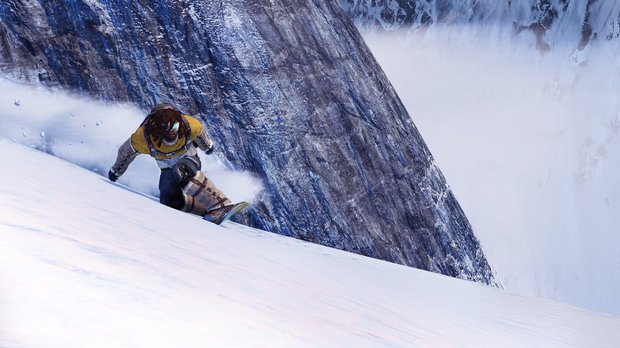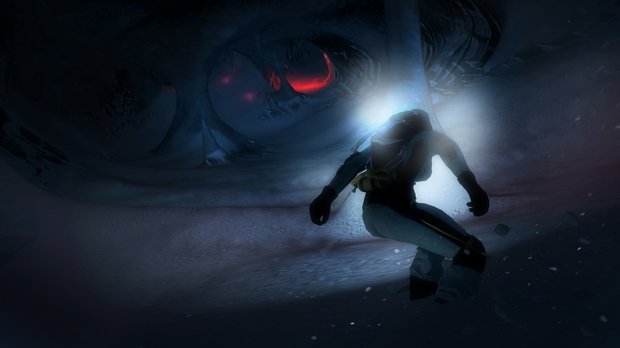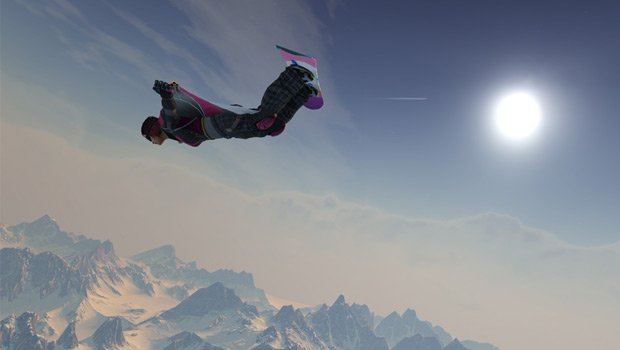SSX preview details on all the deadly descents
The full list of dangers you’ll face in SSX's newest, most death-defying mode
Hey, remember when SSX was SSX: Deadly Descents? Publisher EA eventually dropped that subtitle in a signal to fans that this newest entry was a true return to the pure and classic snowboarding gameplay they loved during the last console generation, not just an edgy and gritty spin-off. We followed suit, focusing on the nuances of the controls, physics and tracks in our recent previews.
But the deadly descents aren’t a gimmick. They are a substantial, inventive and, from what we’ve seen so far, exhilarating new way to play SSX. At a press event last week, the game’s developers detailed the full list of deadly descents for us. Nine different dangers. Nine different survival techniques. Nine twists on the series formula. Here’s what to expect, and how to prepare:
Avalanche – This was the first danger revealed, cinematically brought to life by the SSX reveal trailer last year. You’re not just snowboarding down a mountain, you’re escaping down a mountain as quickly as possible to avoid the monstrous coffin of suffocating snow right behind you. Speed is key, but so is avoiding points on the track that will trigger a larger avalanche. Plus, the entire race occurs from a reverse point of view so that the avalanche is visible while the course is unknowable.

Whiteout – You know the one about the polar bear in a blizzard? Same idea here. Furious driving snow obscures the slope, making extremely poor visibility – with curves and obstacles popping into view at the last moment – your biggest concern.
Oxygen – SSX’s developers asked real snowboarders what dangers they face on real mountains, and this deadly descent was one of the inspired results. You’re so high up a peak that the atmosphere is too thin and breathing is too difficult, making as short a trip down the mountain as possible necessary for your lungs, brain and survival.
Ice – Every racing game needs an extra slippery track that makes precision control and direction nearly impossible. SSX is no exception. Expect to fly through the course at a thrilling yet uncomfortable velocity.

Darkness – The SSX series is known for bright, expansive, majestic environments that you can navigate in dozens of different ways. Inside the mountains, however, are networks of shadowy, intricate tunnels that will require not only better reflexes, but better equipment (i.e., a gloom-piercing headlamp) to navigate.
Sign up to the GamesRadar+ Newsletter
Weekly digests, tales from the communities you love, and more
Sunlight – The sun isn’t the enemy here; it’s the savior. This deadly descent requires players to stay near patches of warmth, as the areas untouched by the sun are too chilling to survive for long periods of time. The visuals here, as in Darkness, should be striking.
Rocks – Lots of rocks. Avoid hitting them. Pretty simple.
Trees – The idea here is similar to Rocks, but since trees are tall and narrow as opposed to round and squat, the course will have more of a slalom feel, with the player sliding back and forth drastically and desperately to avoid crashing into the criss-cross of fallen trunks.

Gravity – This deadly descent may be the most fun, but also possibly the most difficult to master. Massive gaps and crevasses in the terrain must be traversed safely, and the only method for doing so is… a wingsuit! That’s right, in the newest SSX, you can fly. At least until you run out of wind or lift, at which point you’d better have snow, and not stomach-dropping emptiness, to land on.
There you go. The nine deadly descents of what was once called SSX: Deadly Descent. Note that once you’ve survived a particular descent, that danger will be unlocked for competitive races, time trials and trick runs, some of which will shift the strategy you need to tackle them. In a race or time trial, for example, the wingsuit’s glide could slow you down and should be minimized. In a trick run, on the other hand, you’ll want to catch as much air – to perform as many stunts – as possible.
Sep 30, 2011



